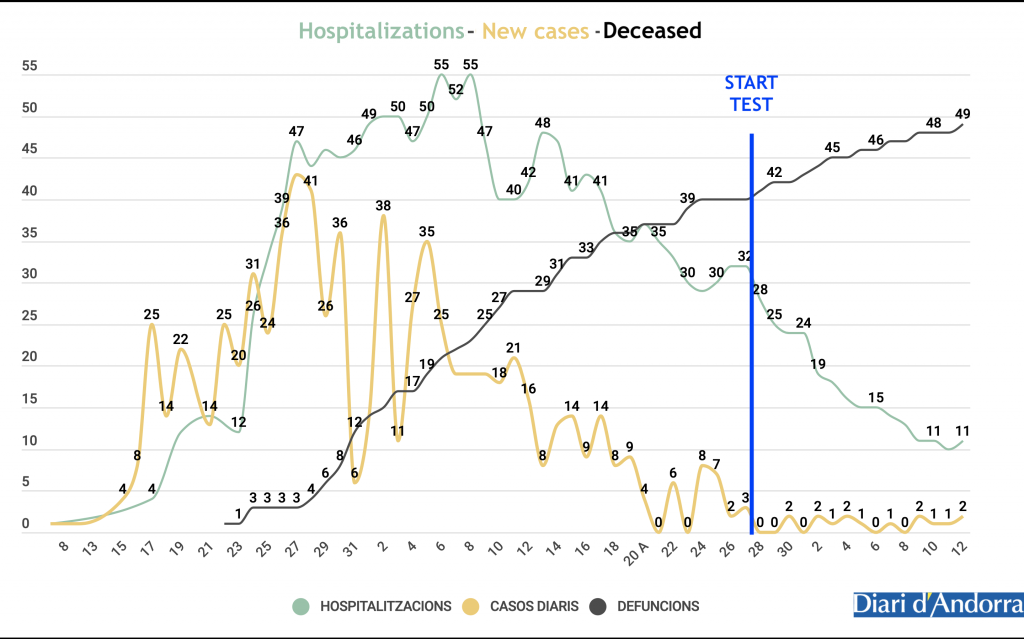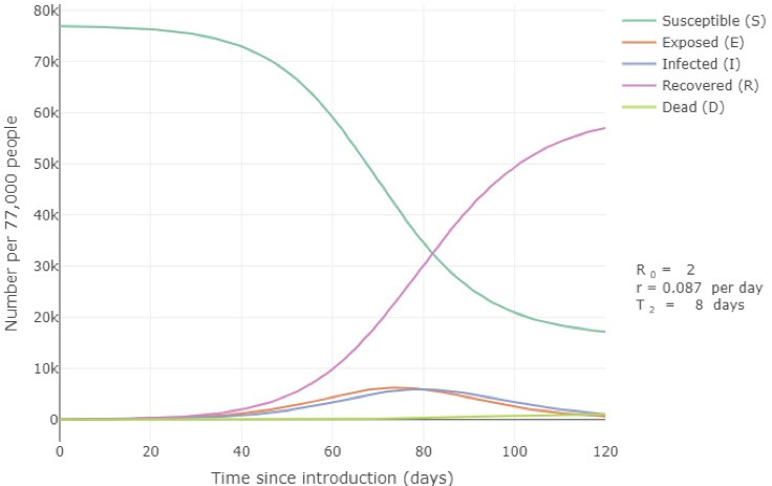Solutions
Seroscreening in geographical areas
In mid May, the country of Andorra used seroscreening to check its entire population. Knowing that there could be many possible asymptomatic carriers, they decided to use seroscreening to find, diagnose and isolate them, and thereby cut the disease’s chains of transmission.

90% of the population of 78,000 people participated in the seroscreening, which took place in 59 meeting places, managed by 1500 volunteers. The individuals went to their appointments in family groups and were attended by two volunteer health professionals who pricked their finger and completed the test while two additional volunteers recorded the results.
Once the population seroscreening with Linkcare’s tests began, transmission stopped abruptly. Everyone who had an IgM positive result (3,718 people) were given a PCR or TMA test for diagnosis. Out of these, 78 individuals were found to be in the infectious phase (2.12%). If these cases had not been detected and isolated immediately, the chain of transmission could have extended over the course of 30 days to 367 new infections (given an R0 factor of 2).

It’s important to note that six IgM+ cases were found in nursing homes, and all of them were asymptomatic. Two later tested positive with a PCR test.
Without the seroscreening, it’s probable that these asymptomatic cases would not only have gone undetected but they would have passed the disease on to other individuals.

